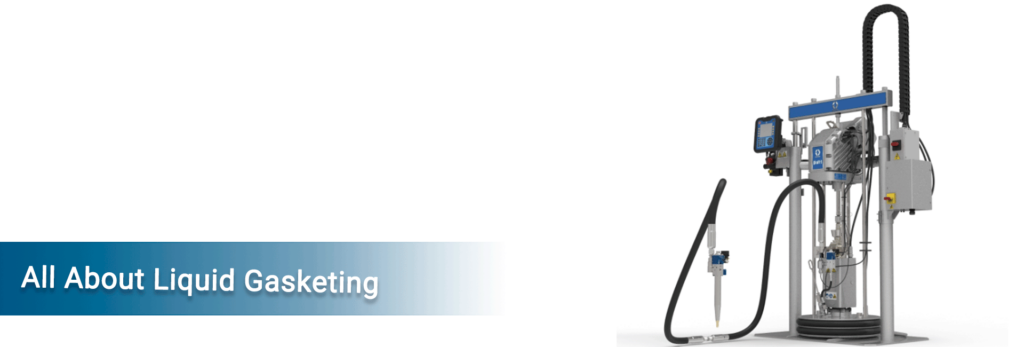Liquid gaskets, also known as liquid adhesives, seal different types of flanges and pipes with threads. They come in various grades to match your needs. These gaskets are like fluids at room temperature and dry over time when applied to a joint surface.
They create a flexible layer or thin film between joints or threads to seal and lock them. Liquid gasket helps cut gasket material costs because only a small amount is needed for sealing. Plus, they adapt well to flange surfaces, reducing process steps.
Understanding Gasket Liquid Sealant
Liquid gaskets are sealants that start as liquid and then harden into an elastic layer. They create a tight seal between two surfaces, keeping air and water out. These gaskets are made from materials like
- Synthetic rubber
- Silicone
- Polyurethane
They’re better than traditional methods like gasket paper or metal-to-metal seals because they’re more flexible and adaptable. Liquid gaskets work well on complex surfaces and odd shapes. They’re also tough against vibration, temperature changes, and chemicals. You can find Liquid gasketing application in cars, machines, and even household appliances.
Applying liquid gaskets is easy — you can brush, roll, or spray them on. They come in different thicknesses and drying times to fit different needs. Check out this table for better understanding of its advantages:
| Cost Savings | Requires only a small amount, reducing gasket material costs |
| Versatility | Effective with low tightening pressure, reducing part and material costs |
| Adaptability | Well-suited for flange surfaces, reducing process steps and costs |
| Simplified Work | No additional tightening needed, simplifying the process |
| Time Efficiency | Less preparation compared to solid gaskets, shortening design time |
| Flexibility | Applicable to any shape or size of flanges, reducing time and cost for inventory control |
Testing Trials of Gaskets
Gaskets are tested to see how well they can handle heat without getting damaged. During the compression test, technicians check for leaks and other problems like holes or cracks. Before products are shipped out, they’re carefully inspected to make sure they meet quality standards.
Industrial Application of Liquid Sealing
Gasket liquid sealant works with different component configurations and substrate combinations. Liquid gaskets are used in various industries like-
- Aerospace
- Medical
- Electronics
- Automotive
- Appliances
Gaskets play a vital role in manufacturing processes and come in various specifications. The choice of gasket material depends on its resistance to-
- Chemicals
- Temperatures
- Pressures
- Acids
- Gasses
- Electromagnetic or electrical forces
They are widely used in cars, trains, planes, boats, electrical equipment, pumps, and numerous other applications. Gasket materials are designed to withstand challenging environments in various industries, including-
- Chemical processing
- Power generation
- Petrochemical and deep-sea operations
- Oil & gas extraction
- Mining
Additionally, they provide sanitary sealing solutions and are widely used in
- Filtration
- food & beverage processing
- Pharmaceutical manufacturing
- Sanitary process industries
Check out this table for detailed understanding:
| Type | Description | Applications |
| Rubber | Synthetic rubber gaskets, invented around 1844 by Charles Goodyear, are widely used and can be made from natural or synthetic materials. | Automotive, industrial, medical devices, electronics |
| Silicone | Silicone gaskets, invented in 1953, contain silicon atoms and are resistant to chemicals, heat, and radiation. They are commonly used in food processing and medical devices. | Food processing, medical devices, industrial applications |
| EPDM | Ethylene propylene diene monomers (EPDM) rubber gaskets have high heat and chemical resistance. They are used in automotive parts, industrial products, and medical devices. | Automotive, industrial products, medical devices |
| Neoprene | Neoprene gaskets are made from a thermoplastic elastomer based on polychloroprene. They are elastic, flexible, and widely used in medical devices. | Medical devices, industrial applications |
| Foam | Foam gaskets are composed of closed-cell urethane foam, offering superior thermal insulation and sound absorption. They are used in various applications, including building construction. | Building construction, HVAC systems, electronics |
| O-Ring | O-ring gaskets consist of metal rings compressed between objects to create a seal. They are popular for sealing shafts and rotating parts. | Automotive, aerospace, hydraulic systems |
| PTFE | Polytetrafluoroethylene (PTFE) gaskets have excellent chemical resistance, low friction, and high-temperature stability. They are commonly used in food processing, pharmaceutical, and semiconductor industries. | Food processing, pharmaceutical, semiconductor, chemical industries |
Gasketing Machine
Manufacturers need to keep their inventories low while meeting customer demands for shorter production runs and varied product varieties. Thus, they need gasket technology that performs well and offers flexibility.
Gaskets can be formed on-site for complex component configurations. It’s best to use programmable robotic equipment for dispensing, ensuring speed and consistency.
There is a variety of gasket materials available to fulfill specific functional needs, with common properties after curing such as-
- Resistance to moisture
- Minimal shrinkage
- Durability against thermal cycling
- Strong cohesion
- Diverse surface characteristics
Gasketing machine automation allows for quick adjustments to accommodate new product geometries without costly tooling changes. This gasket technology creates sealants and gasket materials that stick to surfaces once they are cured. This allows for immediate handling and uninterrupted production. If gasket replacement is needed, removal is also simple.
Conclusion
Liquid gasket seals joints effectively, saving costs by requiring minimal material and simplifying processes. They suit various industries like aerospace, medical, and automotive, offering durable sealing solutions. Understanding gasket types such as rubber, silicone, and neoprene helps choose materials for specific needs. Industries benefit from gaskets’ resistance to chemicals and heat, ensuring operational efficiency and safety. Gasket testing ensures quality, focusing on heat resistance and leak prevention. Gasket machines and automation enhance production, allowing quick adjustments and consistent results. Liquid sealing gaskets play a vital role in industrial sealing, offering cost-effective, adaptable solutions for diverse applications.
FAQs
A Liquid gasket is essential in engine operations because it prevents the mixing of liquids or gasses between engine parts, ensuring optimal performance.
Gaskets Liquid sealing typically acts as static seals between flat surfaces, such as joints, while other types of seals are used in dynamic environments involving moving components like rotating shafts and engines.
The primary distinction lies in their application: Gasket liquid sealant
is used to seal connections between components with flat surfaces, while seals are employed in dynamic environments with moving parts like rotating shafts.



